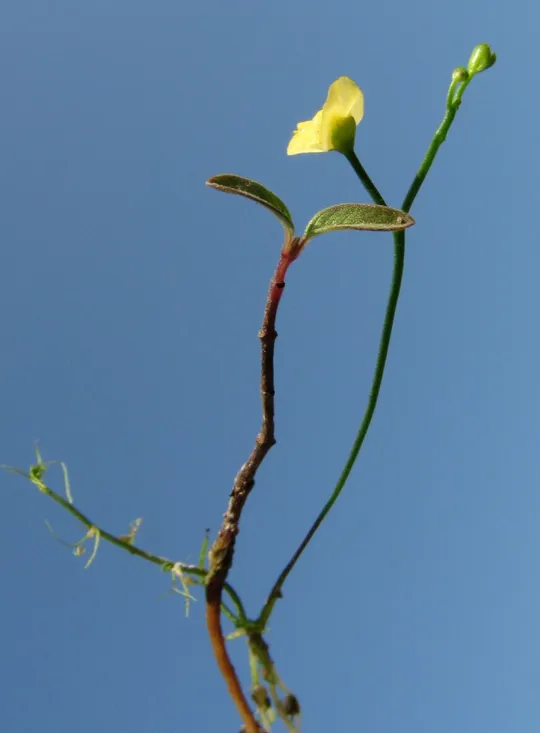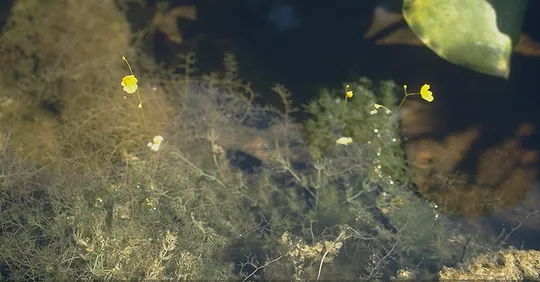Common Bladderwort
Utricularia australis

Utricularia australis plants are used as livestock feed, and are used by
fish for laying eggs.
Utricularia australis was collected a few times in the Hula Valley and
the Sharon in between the 1920s and '40s, but has become extinct since then. In
the Hula Valley, it was collected by N. Feinbrun and D. Zohari at En Malha
(Barid) and was recorded from the Hula Reserve. In the Sharon, it once grew in
the Batih pond northeast of Hadera.
Relatively deep,
still or slow-flowing water.
The Lentibulariaceae family
is a cosmopolitan family of insectivorous (insect eaters) species of aquatic
habitats, which numbers four genera and 245 species. The family originated from
the Scrophulariaceae family; it differs from it in that it includes insectivorous species and in the
position of the eggs in the ovary. The genus Utricularia numbers 180
species that have a global distribution, are submersed in fresh water, and
develop bladders that trap tiny organisms on their leaf lobes. In Israel, an
additional species U. exolata was observed a number of times in several
wetlands. The reports are from the Hula, Ahu Gonen, Batih Pond and a pond near
Tel Gezer. To the best of our knowledge it is no longer found at these sites and
possibly their appearance is random.
Utricularia australis is extinct from
Israel, probably because of wetland desiccation and water quality deterioration.
Despite its broad global distribution, its status in the Mediterranean
countries is NT (Near Threatened) as a result of the increasing threat to aquatic
habitats in these countries.
Attempts should
be made to repopulate Utricularia australis in wetlands, from sources in nearby
countries and botanical gardens.
Utricularia australis has an extensive global distribution
that includes the Eurasian temperate regions and tropical regions that include
India, Southeast Asia and Australia. In the Mediterranean Basin, it is found in
Portugal, Spain, France, Corsica, Italy, Croatia, Bulgaria, Turkey, Morocco and
Algeria.
Utricularia australis is a perennial submersed aquatic plant that traps tiny aquatic
organisms. In the past, it was found in wetlands, at a few sites in the Hula
Valley and the Sharon, but is now extinct. U. australis is relatively common
in the world and is also found in most Mediterranean countries, but is
approaching the threat threshold because of continued damage to the freshwater
wetlands.
ויזל, י. וליפשיץ, נ. 1979. צמחי מים בישראל. הוצאת רשות שמורות הטבע
Current Occupancy Map
| 1000 squre meter pixel | 5000 squre meter pixel | 10000 squre meter pixel | |
|---|---|---|---|
| number of observations | 0 | 0 | 0 |
| in total pixels | 0 | 0 | 0 |
| Family | Lentibulariaceae |
| Classification | On the endangered species list |
| Ecosystem | Mediterranean humid |
| Chorotype | Holartic |
| Conservation Site | reintroduction to Hula Valley |
| Rarity |
1
6
6
|
|---|---|
| Vulnerability |
0
4
4
|
| Attractiveness |
0
0
4
|
| Endemism |
0
0
4
|
| Red number |
1
-1.0
10
|
| Peripherality | 0 |
| IUCN category | DD EW EX LC CR EN VU NT |
| Threat Definition according to the red book | Extinct |
 Based on:
Based on:






